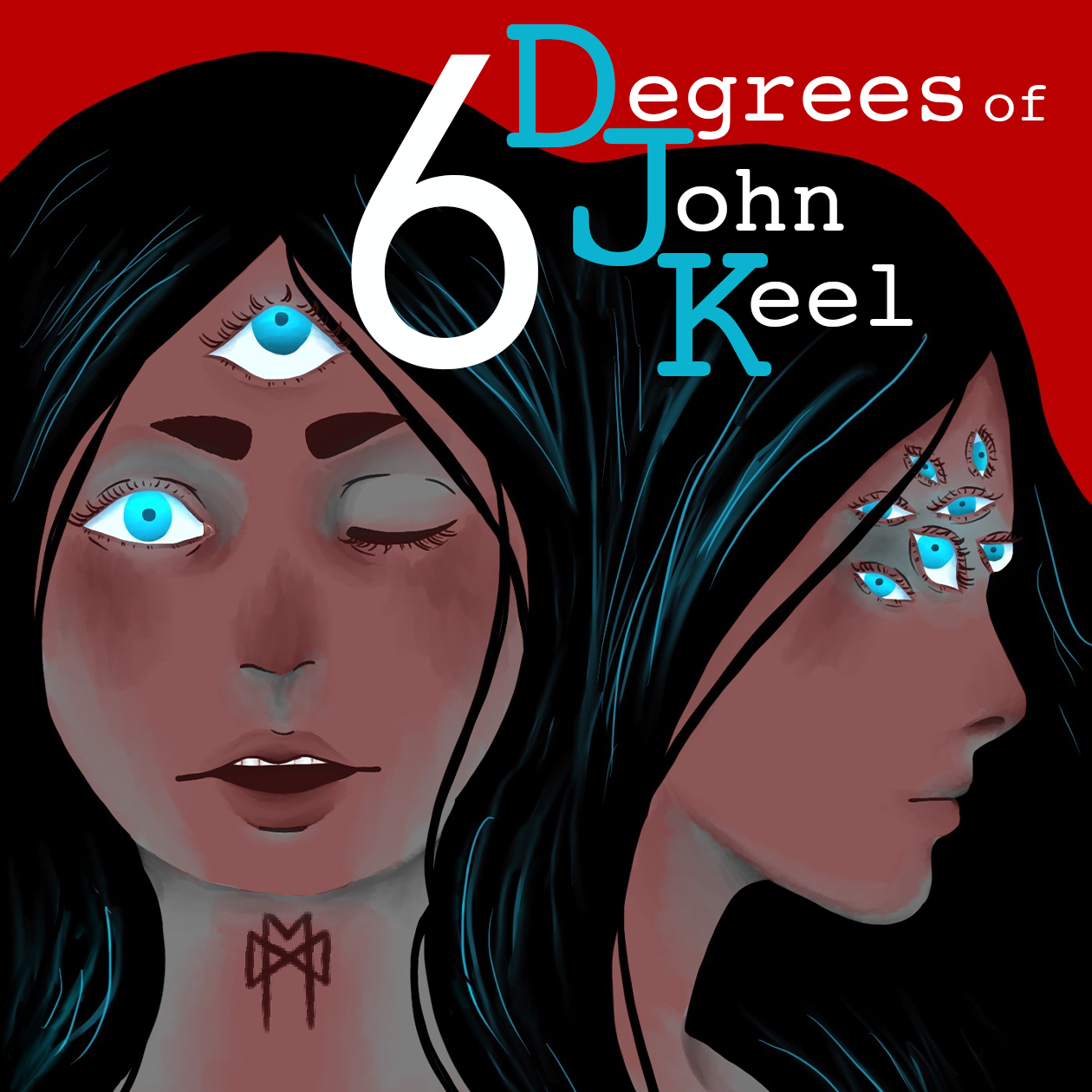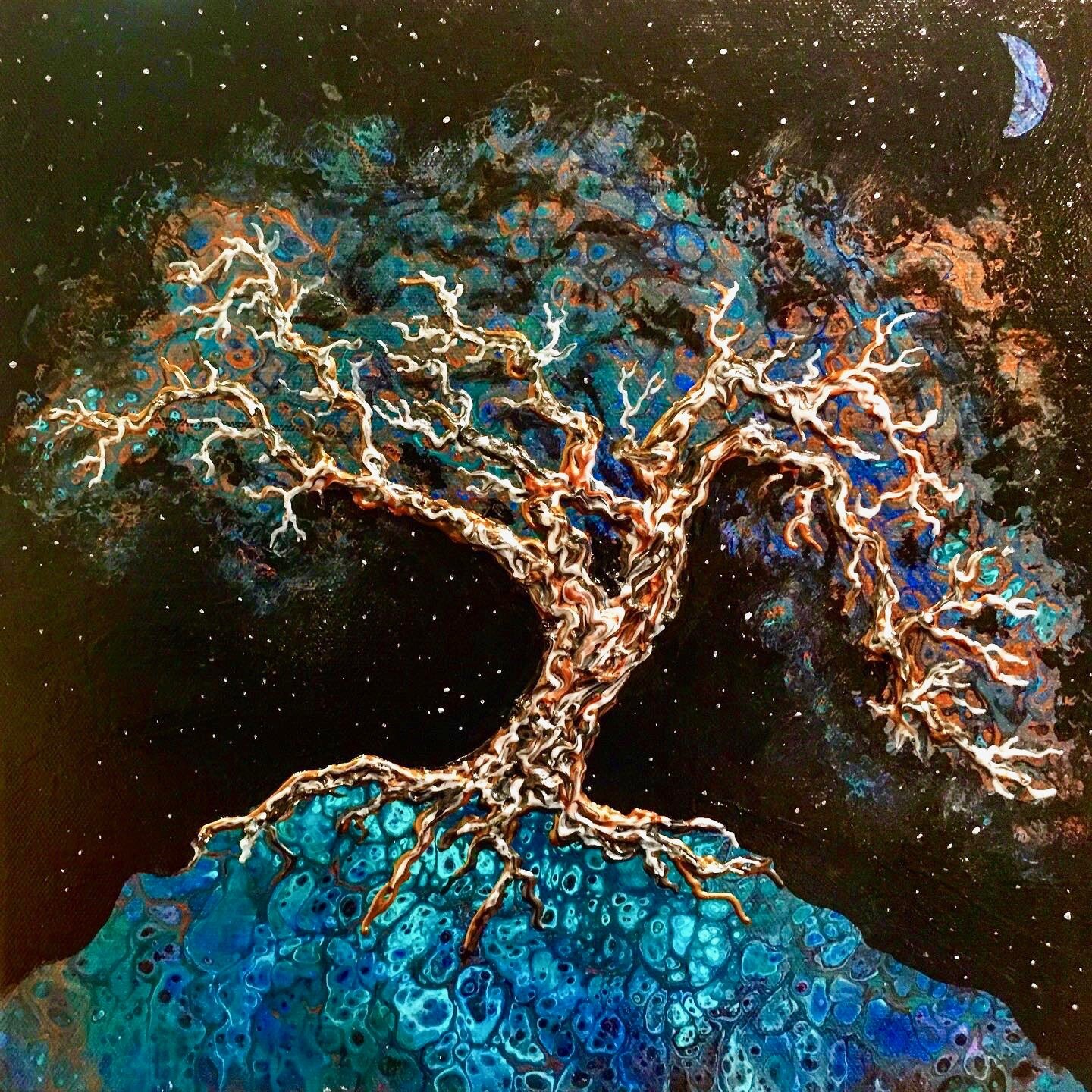Book Review: Dead But Dreaming
“I am dead but dreaming. I am dreaming of you.”
“Otherworld” Acrylic on canvas by Barbara Fisher
Dead But Dreaming is a beautifully written paean to the power of folklore, and the relationship between dream, myth, life and death.
Set in the UK in 1970, the novel captures the flavor of the time and place beautifully and subtly, while telling a quiet tale of a young person finding their way out of grief and loss into a life of wholeness.
The young person in question is a graduate student in the study of fairy lore, who has come to gather the stories of the villagers in the countryside surrounding an insane asylum. The fact that they are offered a place to stay in the asylum isn’t ostensibly directly related to the trauma they suffered at the opening of the novel, however, that trauma is the driving force that propels the story forward in a mysterious unspooling of secrets and whispers.
Poetry and music combine lyrically, with consciousness research, evoking the Otherworld and her denizens--the beloved dead and the fairies, in misty swaths of watercolor, while the psychedelic, mind-bending, reality twisting effects of DMT are painted in delicate strokes of imaginative prose.
Set in an insane asylum and peopled by doctors, folklorists, patients and villagers, this novel creates a world that is familiar to those who have read the novels of Graham Joyce, the master at evoking the everyday magic of the English countryside in unsentimental terms.
What I found fascinating is that I felt echoes of my own magical world—Appalachian Southeastern Ohio— in Rushton’s words. His descriptions of the grounds of the asylum harkens back to the old Athens Lunatic Asylum whose beautiful Kirkbride building still looms over the river valley of Athens Ohio, where I have lived for lo these many years. The landscape of his novel itself is reminiscent of the hills, fields and woods of Appalachia I have roamed most of my life.
(This is probably why I felt so comfortable in England when I visited thirty years ago, and very much wanted to stay. It could also have been some ancestral calling; my great-grandfather and grandmother were both born in the UK and lived there through their teen years.)
Fairies comes across as neither quaint, nor whimsical, nor fantastical here--the book is magical without being unbelievable. The fairies are real, not metaphorical, or purely spiritual, with physical bodies (well, sometimes physical bodies) that can both live and die. They have their own culture with its own rules, all of which are very believable. The rules of the fairy Otherworld are based on the fairy traditions of the British Isles, but are not constrained by them, and represent the lived experiences of the characters throughout the novel.
These English folklore traditions are braided easily together with the spiritual and visionary shamanic traditions of South America, especially vis a vis the use of entheogenic plants.
The entheogen in question, which is clearly based on DMT, (one of the active molecules in ayahuasca, a powerful hallucinogenic medicine native to the Amazon basin) , is the means by which the psychiatrist in the novel works his remarkable cures on his patients. The plant from which it is derived, however. was not gifted to him, but to the second main character in the plot—a transplanted South American woman who is a patient in the asylum. She is favored among the fairies, because she was born with the ability to see and communicate with them without the use of any particular drug or technique—which is what landed her in the asylum in the first place.
It's a fine line for an author to walk—writing a fantasy that is believably set not only in the real world, but one that also convincingly evokes a recognizable period in recent history. Rushton does an excellent job in Dead but Dreaming, making everything about this story viscerally real, while still retaining the rhythm and surrealism of a dream.
There is a great deal more I would like to say about this lovely little novel, but I don’t want to spoil any of it for anyone by giving away too many details. Suffice to say it is very much worth the read and will ring true to many who live enchanted, yet very real, lives.

